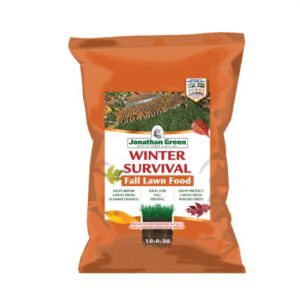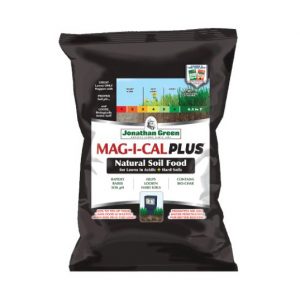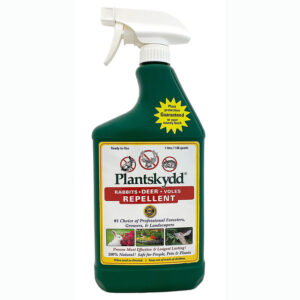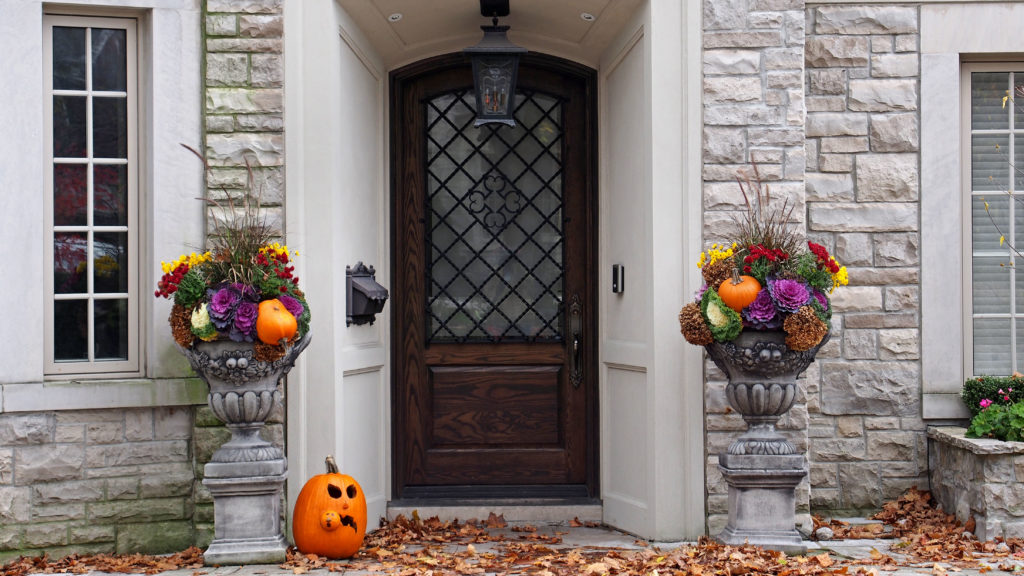
Like it or not, summer is a blip on our seasonal schedule and before we know it fall is in full force once again. Leaves are changing, days are shortening, and nights have a bit more chill. Now is a great time to overseed your lawn, tidy up the landscape in preparation for the winter, as well as transform your summer gardens for fall.
Fall Lawn Care
When and Why to Overseed Your Lawn in Fall
Mid-August through Mid-October is a good time to overseed your cool season grasses (Kentucky bluegrass, perennial rye-grass, fine fescue, and tall fescue) which are the most common in the Midwest. Overseeding lawns holds many benefits – but what exactly is overseeding?

Instead of tearing up your turf and seeding over soil – you can simply seed over “overseed” trouble spots on current grass. Benefits of overseeding include:
- Discouraging Weeds. Thickening your grass will help prevent weed from revealing themselves.
- Repairs Burn Spots. Did summer ravage your once green lawn into a brown sad patch? Consider aeration and overseeding to bring it back.
- Added Vigor. Overseeding improves the overall strength of lawns.
- Uniformity. Worried you may have to renovate your entire your lawn and start fresh? Think again! Overseeding your lawn is a much better alternative to get a uniform, “blemish free” landscape.
Definition of Overseeding & The Benefits
Instead of tearing up your lawn and seeding over soil – you can simply seed over trouble spots on current turf. Some of the benefits of overseeding your lawn include:
Fall Fertilizing
The best thing for your lawn next spring is Jonathan Green! Begin with Fall Magic to repair summer damage. Fall and winter formula keeps your lawn greener later into the year. Use Winter Survival to provide winter turf protection. Use Mag-I-Cal to correct soil pH and build strong grass plants. And, if you’re trying to stimulate your soil to grow better turf, use Love Your Lawn, Love Your Soil to loosen heavy, hard packed soil to release trapped nutrients, or use on existing lawns when seeding to enhance grass root mass development. The last application of fertilizer should be applied before Thanksgiving or until the ground freezes.
Transforming Flower Beds and Containers from Summer to Fall
As inevitable as the falling leaves – our petunias, geraniums, and snapdragons sucumb to gravity, as they too, tell us their time has passed. It’s that time to transition our flower beds and containers into treasure chests of jewel toned blooms.
First Things First: Plant Your Spring Flowering Bulbs!
Many gardeners take this opportunity to plan ahead and plant their spring flowering bulbs. You’ll surely appreciate the forethought once you see sunny daffodils, lipstick pink tulips, and aromatic hyacinth poke their heads out – a good signal that winter is (finally) over.
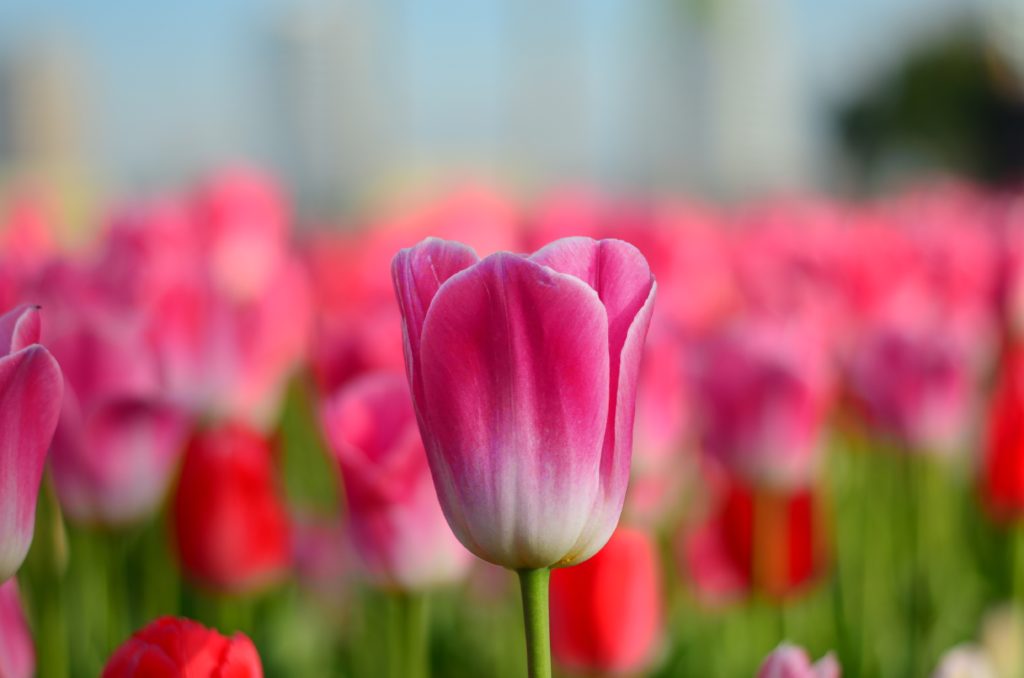
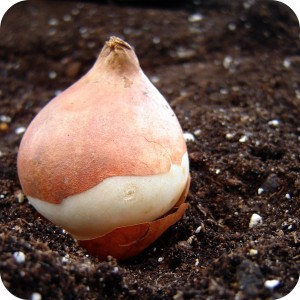
Plant Spring Flowering Bulbs
You’ll want to get your bulbs planted now before the ground freezes solid. Make sure to apply bone meal or bulb booster to the bulbs for a much needed spring fertilizer as well as Plantskydd squirrel and rabbit repellent to keep them from getting dug up and eaten.
Check out our blog for planting bulbs. There’s a nifty chart to help you determine planting depth and bloom times!
Select Your Fall Plants & Accents
When it comes to fall color, your mind may automatically to to garden mums for their versatile color options. An excellent choice, chysanthemums bloom into a globe of vibrant tones such as white, red, yellow, orange, pink, and magenta. If you’re looking very bright purple – we recommend asters which also come in pinks. Sometimes overlooked, ornamental cabbage and kale offer a deep foliage hues with veins of purple. They make excellent fillers in containers along with ornamental peppers. If you’re seeking out the delicate look of traditional annuals pansies are your go-to. They’re often multi-colored and known for their cold tolerant nature.
Fall Mulching & Weed Prevention
A fresh layer of mulch applied to perennial beds and the base of roses will help the root systems from freeze burning over the cold winter months.
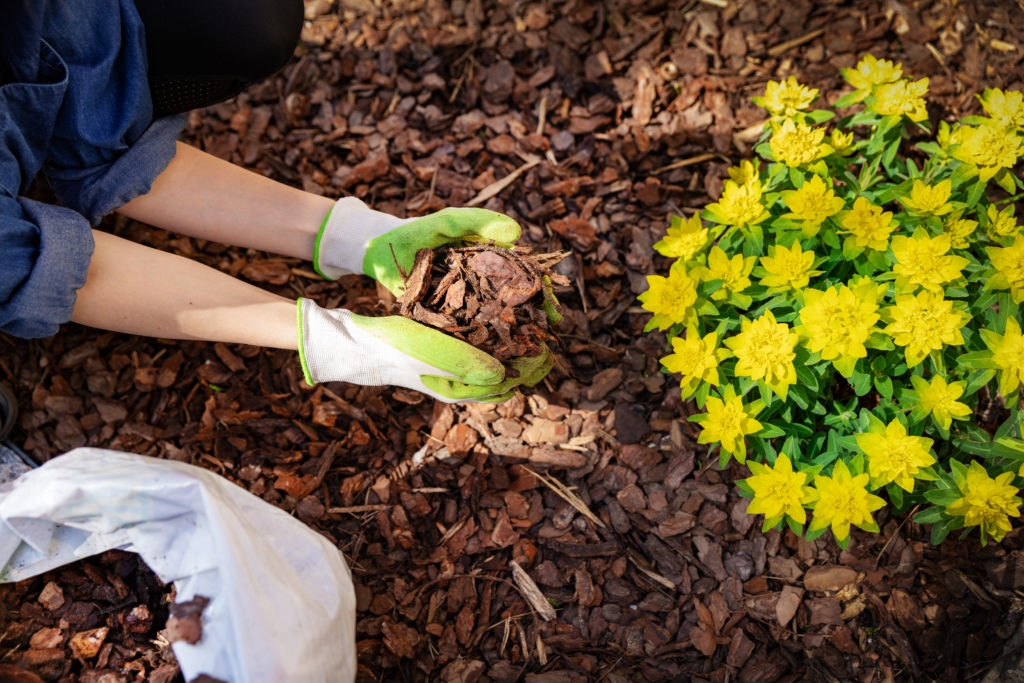
Prevent Weeds for Next Spring
Apply and application of Pre-emergent like Preen to your mulched beds to prevent unwanted weed seeds from early spring germination.
Protect Your Plants
The use of Wilt-Proof or Wilt-Stop is highly recommended for plants like Boxwood, Rhododendron, Azalea, Arborvitae, Holly, Hydrangeas, and Japanese Maples. This application should be done around Thanksgiving and will help these plants from getting wind-burned from the cold and drying winds. This also helps the buds from drying out over the winter.

